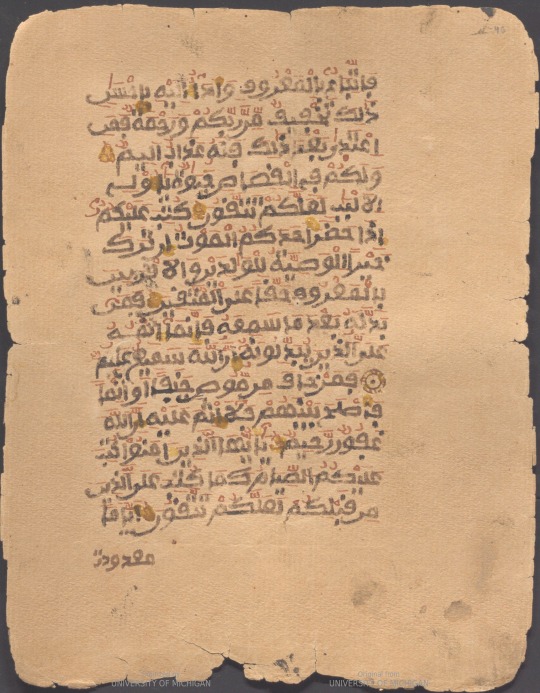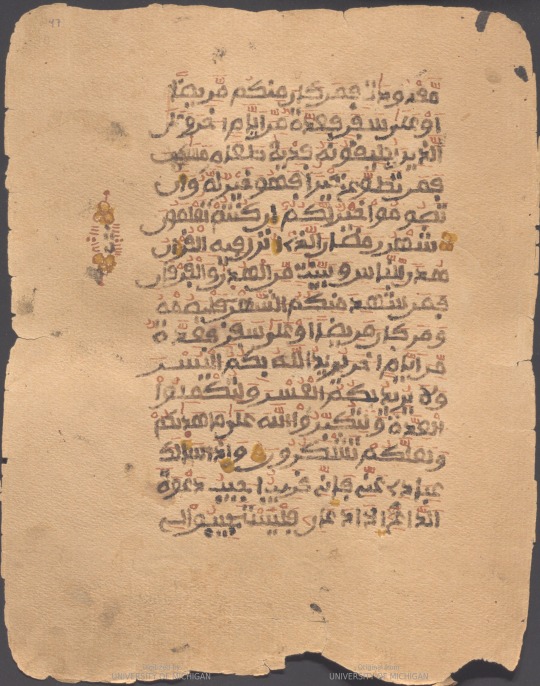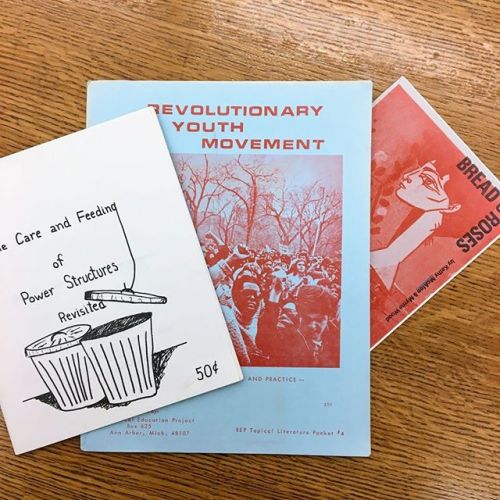#special collections
Our Queen of the Polls is just checking in — there’s two more hours to vote left in Missouri!⠀
#IVoted #yovoto #Vote2018 ⠀
(Postcard on loan from private collection.)⠀
.⠀
.⠀
.⠀
#bibliophile #bookstagram #booklover #rarebooks #specialcollections #librariesofinstagram #iglibraries #mizzou #universityofmissouri #ellislibrary #ifttt #costumehistory #fashion #edwardian #historicalfashion
Post link
You know what would be a revolutionary youth movement? Turning out to vote!⠀
Check out our 20th Century Political Pamphlet collection to learn more about these organizations, and check out vote.org to learn more about voting today.⠀
.⠀
.⠀
.⠀
.⠀
.⠀
#govote #voting #vote #youthvote #breadandroses #pamphlets #bibliophile #bookstagram #booklover #rarebooks #specialcollections #librariesofinstagram #iglibraries #mizzou #universityofmissouri #ellislibrary #ifttt
Post link
Don’t worry: we didn’t forget the 5th of November. Here you can read an account from King James “as neere his very words as could be gathered at the instant!"⠀
(In fact, you can read a whole lot about the #GunpowderPlot in our collections.)⠀
DA302 .A3⠀
.⠀
.⠀
.⠀
.⠀
#5thofnovember #guyfawkes #bonfirenight #guyfawkesday #bibliophile #bookstagram #booklover #rarebooks #specialcollections #librariesofinstagram #iglibraries #mizzou #universityofmissouri #ellislibrary #ifttt
Post link
Are you ready to vote tomorrow? Do you know what’s on the ballot? Have you triple-checked your polling place? One more day!⠀
LH1 .S2⠀
.⠀
.⠀
.⠀
⠀
#vote #govote #democracy #yearbook #bibliophile #bookstagram #booklover #rarebooks #specialcollections #librariesofinstagram #iglibraries #mizzou #universityofmissouri #ellislibrary #ifttt
Post link

Marbled Monday board linings and hinges! From the lower board on the cover of Isl. Ms. 453, a manuscript volume of Maʻālim al-tanzīl, al-Baghawī’s (d.1117?) commentary on the Qurʼān, copied in 1447 in Samsun
Description&images of entire manuscript openly available online!


Souvenir de Salonique : Rue Parallèle au quai DS 135 .G72 T41 S688 1912
“Newly acquired and cataloged for our Jewish Salonica Postcard Collection, this historical postcard depicts a street parallel to the dock in Salonica (Thessaloniki), circa April 1912.” Read more!


Les siècles se rencontrant : Juives : La mère et la fille. DS 135 .G72 M47 C67 1917
Newly catalogued for the Jewish Salonica Postcard Collection: Two centuries meeting – the mother and daughter, circa 1917.
“A mother and her daughter walk down a street in Salonica (Thessaloniki, Greece) around 1917, as depicted in this historical postcard newly cataloged and added to our Jewish Salonica Postcard Collection. The mother is in a traditional Jewish dress while the daughter wears a modern Parisian one.”

“End 20 Years of Israeli Occupation"
November 29th Committee for Palestine
Design: Juan R Fuentes 1987
Political Posters, Labadie Collection, SCLP1601

Marbled Monday border on this calligraphic piece in talik, signed by Durmuşzâde Ahmed Efendi (d.1717) and dated 1695/6, one of several in the album Isl. Ms. 439
Description&images of entire manuscript openly available online!

Newly gifted to the Joseph A. Labadie Collection: Der frayer gedanḳ (La pensée libre), a Yiddish monthly Anarchist journal published in Paris and Tel Aviv between 1949-1963. Read more!


We are very pleased to announce a new digital exhibit highlighting some extraordinary Greek manuscripts from our collections: Greek Manuscripts at the University of Michigan Library: A Celebration. This virtual exhibition accompanies, and expands, the physical exhibit of the same name currently shown at the Audubon Room (Hatcher Library North) from March 26 to June 28, 2022. The online exhibit is also available inside the Audubon Room: visitors are welcomed to further explore, and zoom-in, other fascinating features of the manuscripts on display. Read more!








Conservation Technician, Brooke Adams, describes the complex treatment of an International Good Roads Tour Scrapbook, part of SCRC’s Transportation History Collection. The scrapbook was compiled by William Sydnor Gilbreath Sr., a businessman and strong supporter of the Good Roads Movement (GRM). The scrapbook was created during Gilbreath’s participation in the 1920 International Good Roads Tour through Michigan and southeastern Ontario.


Salonicco : Cimitero Israelita DS 135 .G72 T41 C46 1917
“With more than 300,000 graves, the Jewish cemetery of Salonica (Thessaloniki, Greece) depicted in this postcard was one of the largest Jewish cemeteries in Europe. This cemetery was also an outstanding symbol of the centuries-old Jewish presence in the Balkan port-city and capital of the region known as Macedonia – grave stones that have survived are dated back to 1493.
Initially located in the periphery of Salonica, the Jewish cemetery eventually became a central area as the city expanded eastward. After the Great Fire of 1917, new urbanistic plans proposed the expropriation or transfer of the cemetery. In the 1930s, parts of the Jewish necropolis were given to the University of Thessaloniki…” Read more!


شَهْرُ رَمَضَانَ الَّذِي أُنزِلَ فِيهِ الْقُرْآنُ
Blessed early days of Ramadan
183 You who believe, fasting is prescribed for you, as it was prescribed for those before you, so that you may be mindful of God. 184 Fast for a specific number of days, but if one of you is ill, or on a journey, on other days later. For those who can fast only with extreme difficulty, there is a way to compensate – feed a needy person. But if anyone does good of his own accord, it is better for him, and fasting is better for you, if only you knew. 185 It was in the month of Ramadan that the Qur’an was revealed as guidance for mankind, clear messages giving guidance and distinguishing between right and wrong. So any one of you who is present that month should fast, and anyone who is ill or on a journey should make up for the lost days by fasting on other days later. God wants ease for you, not hardship. He wants you to complete the prescribed period and to glorify Him for having guided you, so that you may be thankful.”
[The Qur’an 2:183-185, translation of M. A. S. Abdel Haleem]
Opening with Sūrat al-Baqarah (2) 183-185 in Isl Ms 1061, stunning late 19c or early 20c copy of the Qurʼān from Borno
Browse / download the entire manuscript here
Ramadan Kareem with care and hopefulness


Salonique 1917: Le Quartier israëlite détruit. Special Collections Research Center DS 135 .G72 T41 Q37 1917


Salonique: Incendie des 18-19-20 Août 1917 DS 135 .G72 T41 I53 1917
“Located between the Mediterranean Sea and the Balkan Peninsula, the port city of Salonica (Thessaloniki), Greece, is in the intersection of two different climatic zones – a geographic situation that creates high variations in atmospheric pressure during the year. In several occasions through the centuries, the strong winds that blow from the north down the Vardar valley whipped up fires that quickly spread, causing significant damage and devastation in the city. The fire that sparked in Salonica on Saturday, August 18, 1917 was of unprecedent scale and changed completely the physiognomy of the city. The fire burned a large part of the historic city center, where several predominantly Jewish neighborhoods were located, leaving a large part of the city’s population homeless – approximately 56,000 Jews, 15,000 Christians, and 10.000 Muslims had their houses consumed by the fire. After the fire, a new urbanistic plan was implemented under the leadership of two famous architects, Ernest Hébrard of France and Thomas Mawson of England. The majority of the Jewish residents who lost their houses, now impoverished, were transferred to peripheral areas of the town, such as the Regie Vardar and Campbell districts. Dozens of postcards depicted the great fire of 1917, including the two featured here, which were purchased by the Special Collections Research Center with the generous support of the Lucius N. Littauer Foundation and the Solovy Judaica Book Fund.” Read more!


“Splendors of the religious and artistic endeavors of Byzantine manuscript makers are on display from the Greek manuscript collection at the University of Michigan Library (Special Collections Research Center). We warmly invite you to explore these extraordinary treasures at the Audubon Room, North Hatcher Library, March 26-June 28, 2022.The University of Michigan Library holds an extensive collection of Greek manuscripts consisting of 110 codices (bound manuscripts) and fragments that range from the fourth to the nineteenth centuries CE. It is the largest such collection in the Western Hemisphere. As explained in the exhibit, most of these manuscripts were purchased through the efforts of Professor Francis Willey Kelsey in the second decade of the previous century. Our exhibit displays highlights from these holdings, offering insights into the religious and artistic endeavors involved in the making, use, and dissemination of Byzantine codices.” Read more!


Salonique: Synagogue des Italiens. Circa 1917. Special Collections Research Center. DS 135 .G72 T41 S96 1917
Enjoy a recently catalogued item for the Jewish Salonica Postcard Collection.


Costume de femme juive (Souvenir de Salonique), 1917. Éditeur: Albert Barzilai. Special Collections Research Center DS 135 .G72 T41 S68 1917
Enjoy a recently catalogued item for the Jewish Salonica Postcard Collection.












Get Those Books Moving : Part 3
Third in a series of guest posts from Shaoyi Qian, summer 2021 Baker Fellow at the U-M Library’s conservation lab, describing her work on several pop-up and moveable books. Read more!
This blog post was written by Maddy Dean, a student in Dr. Jessica FitzPatrick’s ENGLIT 0512 Narrative and Technology Course. This class visited Archives & Special Collections in the Fall 2021 term.
Since the 19th century, narrative technologies have appealed to the masses publicly through periodical printing – even the traditional novel started appearing periodically throughout publications. Charles Dickens’ “The Personal History of David Copperfield”(1849-1850) and Ernest Hemingway’s “A Farewell to Arms" in Scribner’s magazine (1929) were published monthly for distribution to the public, with advertisements and the inclusion of other fiction pieces to be consumed and shared between friends and families.

(Above) An advertisement for Home Goods in Scribner’s October issue. Hemingway, Ernest. “A Farewell to Arms.” Charles Scribner’s Sons, 1929. Archives & Special Collections, University of Pittsburgh Library System.
Bookending each of Hemingway’s and Dickens’ serial fictions, the advertisements invite readers to browse different products, services, and even books before diving into a volume of the novel. These ads offer a level of interactivity and immersion that can almost be equated to ads we see on television or online today. Readers had the choice of either skipping over ads and diving straight into the magazine pieces or browsing the columns for things like household furniture or printing services (pictured above). An interesting feature of the narrative discourse offered in these magazines is the inclusion of ads for books and publications by authors other than Hemingway or Dickens. Advertising other pieces informs readers of new stories and authors, but it also takes away from the idea of single authorship in a book since the novel appears in a periodical, not in traditional book format.
These ads also suggest the type of audience who read magazine fictions, with home goods and beauty services appealing to the public. Ads for printing services and other stories indicate that readers of Hemingway and Dickens were also interested in reading other works and maybe even publishing their own (pictured below). They show that narratives are not always composed of just a story but include other elements that invite readers to browse their contents and choose what they want to read. Ads act as element of narrative discourse, changing how the novels are read and viewed through their inclusion either before or after the actual story. The magazines serve as a form of entertainment as well as advertisement.

(Above) an advertisement for copying machines in a volume of David Copperfield. Dickens, Charles, and Hablot Knight Browne. The Personal History of David Copperfield. 1st ed., Bradbury & Evans, 1849. Archives & Special Collections, University of Pittsburgh Library System.
The periodical printing of Hemingway’s and Dicken’s novels also suggests that audiences in this period preferred serialization for a quick read rather than consuming the novel in its entirety. Readers would pass the periodicals along to other families or cut them up for the print – ads that might be beneficial to save or special sections of the novel volume to be read again. Similar to magazines we might pick up in the check-out line at the grocery store today, audiences of magazine fictions passed along these novels or retired them to the bookshelf after consuming their content, eagerly waiting for publication of the next volume.
After exploring “A Farewell to Arms”inScribner’smagazineandDavid Copperfield, it’s clear that readers engaged and appreciated narrative technology by buying a new volume each month, passing the stories onto others to share the great works of Hemingway and Dickens. These periodical magazines are comparable to current magazines and even streaming services that we interact with daily. Subscriptions, the inclusion of ads, and the choice to read (or watch) different stories is still present in narrative technologies and guides our understanding and experience of narratives. While narrative technologies constantly change, it’s evident that the audience consuming these narratives consists of the mass public, reading and absorbing new information as narrative form continues to evolve.
Works Cited
Dickens, Charles, and Hablot Knight Browne. The Personal History of David Copperfield. 1st ed., Bradbury & Evans, 1849.
Hemingway, Ernest. A Farewell to Arms. Charles Scribner’s Sons, 1929.




